As a fly fisherman I do a lot of dreaming—of fish I’ve yet to catch, fish I’ve caught, and fish I’ve gotten to know personally, even without catching them. I dream of places—places I’ve been and fallen in love with, places I’ve not yet been, and places I’ll probably never have the chance to touch.
Places in those latter two categories all illicit certain images, which are, more often than not, laughably two-dimensional. Sometimes wrong. These are not the images through which my more touristy friends come to define a place, like the Florida welcome center experience complete with orange juice and live alligators or the Great Smoky Mountains of a Gatlinburg lodge lobby, adorned with massive faux wood beams, stuffed black bears, and a generic Native American sculpture in stereotypical garb.
As an outdoorsman, I’ve developed an appreciation for the raw images and symbols of a place—wildlife, landscapes, rural culture—the intimate details that transcend those things that others have taken and marketed to the world, the gravel in the voices that tell the stories of the land and perpetuate them.
As a fisherman who’s had the good fortune to get to know a multitude of places, I’ve forever fought the “tourist” label, armed with the quip that, in the company of mountains and water and fish and all things wild, I have, and will always, belong. Maine has all of those raw symbols, and so I am at home there.
As a child, the state’s mention brought to mind dreams of large virgin evergreen stands crisscrossed by snowy whitetail tracks, Canadian moose knee-deep in grassy ponds, large coursing rivers of behemoth brook trout and salmon, and the caramel backs of elderly brown trout in back eddies.
More Like This
I wasn’t altogether wrong, I learned, on my first visit, in the fall following my high school graduation. I saw moose in grassy ponds, heard stories of large brook trout and salmon running, and I watched as a Catskills hardware store owner who fish-bummed out of a cleared-out purple Sienna pulled an 18-inch slab of bulls-eyed caramel out of the Kennebec. What I didn’t see were expansive stands of virgin evergreens. In fact, I learned that most of the state had been de-wilded in that respect—logged, and ground for pulp wood.
Two years later, in the summer halfway through my college education, I revised that image. I was at home as I huffed a dry-pack five miles over rolling jack-pined terrain towards a brook trout pond I’d only heard hushed mention of. The jack pines were relatively young, relics of a forest fire several decades previous. But the landscape brought to mind the voice of conservation I listened to from an elderly Mainer—the owner of a large pulpwood company—a few days before in camp. He was a millionaire, and spent most of his income fishing and hunting. Even in the Big Woods there is big business, but it mostly wears hard hats and fly vests.
After a few hours of bushwhacking, I found my destination, by the growing hum of mosquitoes and black flies swarming the damp lowland of the pond shimmering through softwood trunks.

The forest turned from pine to canoe as I approached the shore of the pond. Mainers love their canoes. Old Town canoes, which are produced in Old Town, Maine, on the banks of the famed Penobscot River, is a testament to that bit of flavor. Those who cherish fishing the backcountry ponds purchase several canoes and huff one into each of their favorite ponds and lock them to a tree to save them the labor on return trips. Then they’ll procure lobster bait bags from the coast, fashion them with ropes for use as anchors when filled with rocks, and carry them, along with a paddle, to their locked canoe to fish.
A friend of mine, who threatened me in no light sense with murder if I were to give up the name of his favorite pond, offered me the combination to his canoe on that pond, which I graciously accepted. After pulling it down from a MacGyvered rack of lashed logs, I broke the calm of the early-evening pond, tossed my pack into the bow to weigh it down, and shoved off for the far shore.
I ran the bow onto a grassy opening and stepped out to see the magnificent, craggy figure of Katahdin standing over me. Light was fading quickly, and so I unpacked my bag, set up camp for the night, gathered some firewood, and strung my fly rod.

There’s no comparable feeling, and no more necessary and valuable an experience to the human condition, than being utterly alone in an untamed setting that’s bigger than you, that doesn’t need you. It never fails to clear my mind and cleanse my soul, and help me to breathe stronger. It excites the fisherman in me, too.
But apparent wildness can be misleading. Many fishermen equate pristine, wild places with gigantic fish in numbers uncountable. As an ongoing research venture—and a native of Shenandoah and a devout follower of the brook trout—I ask experienced anglers in various locations what they hold to be a large brook trout. In Maine the answer is several pounds, but the reality for most of the generally shallow, small backcountry ponds, is that the average fish is somewhere between eight and 14 inches—nothing to leave Shenandoah for.

This is an inherently two-dimensional judgement, though, which I learned as the sun was fading on that pond, the name of which I kept a secret, even in my mind—a place so far removed from civilization and traditional definition that it even now seems abstract. Those 14 inches don’t convey the chilly summer breeze that penetrated my sweater at dusk, or the shivers that rippled through my body at the sight of an endless cloud of mayflies and caddis illuminated by the fizzling sun, or the countless brook trout that broke the surface to eat them. They don’t include the rush of fulfillment that comes with seeing a gentle rise-form swallow a carefully placed dry fly, or the hook set and the initial resistance that alludes to just what exactly ate your fly. They don’t rattle your heart with the tremolo of a loon saying goodnight to the North Woods, or tinkle like the aqueous swirl produced by a paddle stroke. And they surely don’t communicate the filling of the heart and mind with the elements of place like the sight of a 14-inch brook trout with dark, water-colored flanks, pulled from a darkening day into a canoe anchored by a lobster bait bag.
But I saw, and felt, it all through that fish. Maine—more perfect than I could have dreamt it.




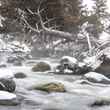
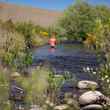





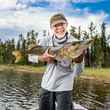
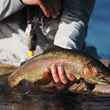


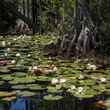
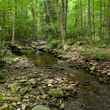



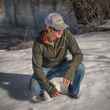
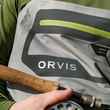



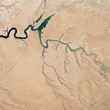
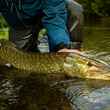

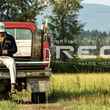

Comments
Jerry Kustich replied on Permalink
A wonderfully written piece that captured the most important aspect of an outdoor experience…the story.
Pages